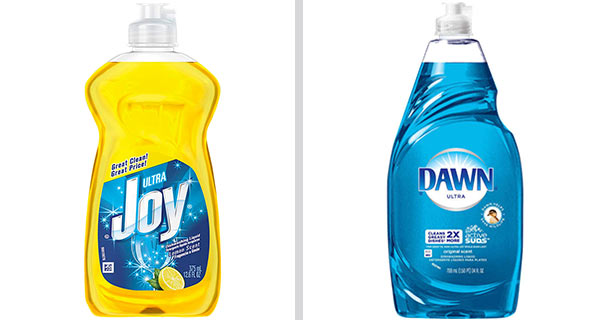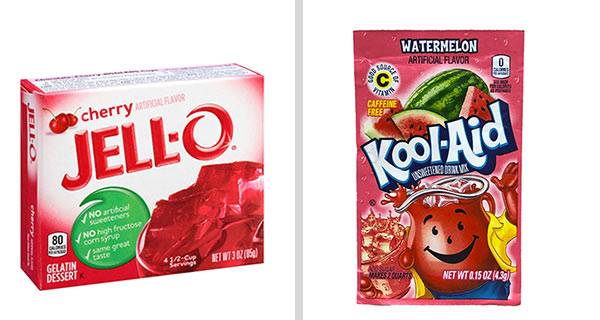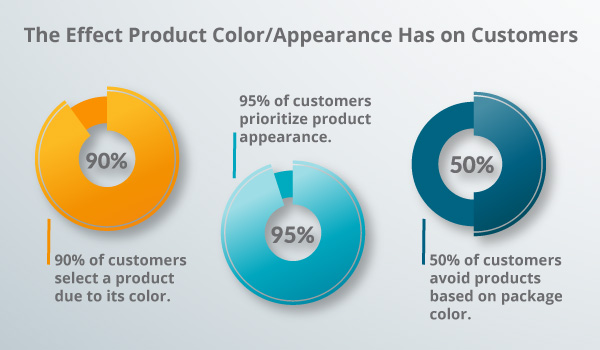Product branding: Where creative innovation meets company expansion
| July 20, 2020

Product branding isn’t a tricky or difficult process – companies build a comprehensive brand for a product to capture a specific target market. It really is that easy.
With some basic strategies, product branding can:
- Simplify customer decisions
- Help brands enter new markets
- Allow more risks
- Uphold brand image
- Clarify a products place in the market
These are possible with a comprehensive understanding of product branding and a complete strategy for implementing it. This article will provide both, as well as some key examples to illustrate how successful brands tackled the process.
What is product branding?
Product branding is an extension of branding that focuses on promoting and bolstering specific products. This is accomplished through taglines, slogans, logos and other visual elements, as well as social media pages. Product branding helps customers determine key differences between one product and another.
The simplest, most straightforward explanation of product branding is this: a company gives a product a brand name. Think PepsiCo (Company) and their green soda drink (product), named Mountain Dew (brand).
Here’s a chart showing some of PepsiCo’s many brands to demonstrate the concept further:
| Brand | Market |
| Mountain Dew | Soft drink |
| Lay’s | Food/snacks |
| Life | Cereal |
| Aunt Jemima | Cooking mixes |
This gives a clear idea of how new brands come about through product branding. One thing to point out is that product branding likely takes plenty of research so that the products don’t overlap and interfere with others.
How is product branding different from branding?
Product branding is similar to branding, and it is a form of branding. However, branding is a much broader, more comprehensive term that encompasses a wider range of branding. Product branding is much more specific and focused.
Branding aims to promote an entire company’s values and identity. Product branding, on the other hand, aims to promote a single product or specific group of similar products. Product branding also requires a focus on brand identity.
Here are a few key ways product branding is different from general branding:
- They cater to different markets. Branding aims to satisfy a broad group of customers, whereas product branding focuses on a specific target market.
- Their marketing evolution is essentially reversed. When it comes to product branding, market expansion is rare and usually not possible.
- The marketing promotion is completely opposite one another. Product branding promotes specific product qualities, while general branding promotes overall company qualities.
Let’s now consider the many ways that product branding is beneficial.
5 important yet often unexplored benefits of product branding
The following five benefits give you an idea of how important it is to understand product branding.
1. Makes the overall purchasing process easier for customers
“Most people spend more time and energy going around problems than in trying to solve them.” – Henry Ford.
Customers are able to handle a potential purchasing decision a lot easier the better your product branding process is. Using a grocery store as an example, imagine that you’re a customer looking for dishwasher soap/detergent. If you’re in need of getting thick, greasy stains off dishes, you might opt for the Dawn brand. If you just need a light rinse and want some lingering good smell, Joy might suit you best.
 Joy and Dawn, of course, are both owned by the company Procter and Gamble. However, the way each product is branded has given customers a better method to consider the unique benefits and function of each.
Joy and Dawn, of course, are both owned by the company Procter and Gamble. However, the way each product is branded has given customers a better method to consider the unique benefits and function of each.
2. Product brands aim to capture a submarket
I like to use the sports drink, Powerade, as an example here. Powerade was created as a way for the Coca-Cola company to enter a subdivision of the beverage market.
Certainly, a drink called ‘Coca-Cola Sport’ wouldn’t be able to attract enough of the athletic market needed, since most customers associate Coke with sugary cola.
Powerade, however, was positioned to bring in its own, unique subset of customers. By existing as its own brand, Powerade has carved out a special place in the minds of customers, separate from its parent company Coke.
To see the importance of targeting smaller, different markets, take a look at this chart of Coca Cola’s global beverage sales (courtesy market.us):
 Certainly, 70% is a lot of their sales, but when you consider that an entire 30% was accomplished through product branding designed to capture new markets, a clearer picture forms of importance of this task.
Certainly, 70% is a lot of their sales, but when you consider that an entire 30% was accomplished through product branding designed to capture new markets, a clearer picture forms of importance of this task.
This is the power of product branding. It sets up a chance for companies to branch out and infiltrate markets they couldn’t otherwise get into.
3. Creates necessary, helpful separation between a brand and a company
Product branding helps a brand stand out among other products. Similarly, it allows a brand to avoid adopting certain company associations.
Furthermore, through product branding, the company name isn’t in the forefront. Even though this prevents the product from advantages it would have had if it did use the company name, it ultimately makes things easier on the customer.
Product branding ensures a new brand is its own entity, with a unique identity that focuses on a specific group of products that are not tied to its parent company.
4. Prevents a company’s name and position from being tarnished by a failure
If a new product fails, you don’t want this failure to carryover into different products, or even worse, into the parent company.
This could spoil an entire wave of products, brands and the company overall. That’s why product branding is so crucial. It allows companies to take risks on creative, inventive products. Mark Zuckerberg said it best when he stated, “The biggest risk is not taking any risk. In a world that is changing really quickly, the only strategy that is guaranteed to fail is not taking risks.”
If the popular sparkling water brand, San Pellegrino, ended up failing, it’s unlikely that many people would associate its failure with Nestle (the parent company).
 In a way, product branding acts as a layer of protection between brands and other brands, also between brands and companies. More importantly, though, is the potential creativity to create new product lines this encourages.
In a way, product branding acts as a layer of protection between brands and other brands, also between brands and companies. More importantly, though, is the potential creativity to create new product lines this encourages.
5. Creates market clarity
Product branding ensures that a brand represents a specific product, which clarifies the market to which it belongs.
Conversely, completely different products under a singular name would be obnoxiously frustrating to customers.
Instead, a product brand should focus on one idea and take up a certain position.
To demonstrate the importance of this, consider the company Unilever. If they didn’t adhere to any product branding, they would have products called ‘Unilever Soap’ and ‘Unilever Ice Cream Bars’.
Doesn’t sound too appealing, does it? Plus, it confuses customers and prevents them from identifying specific brand names and attributing characteristics to them.
Fortunately for Unilever, they do in fact adhere to product branding, and instead of unilever soap and ice cream, we have Dove soap and Klondike bars (both Unilever brands).
With these potential benefits, it becomes clear that product branding is crucial. So how do we successfully brand products?
How to successfully implement product branding
Product branding focuses on how customers react to a certain brand and product. Similarly, it involves creating new names and identities that are not shared with any other brands or products.
This doesn’t mean that a company can’t create two brands with similar products. In fact, this happens all the time. As I referenced earlier, Dawn and Joy are both dishwashing soap owned by the same company.
Here are some key tips to move the product branding process along successfully:
Understand the unique purpose of the product, then learn the market it will belong to
Product branding ensures a product has its own brand and stays true to certain features that are aimed at a particular market.
For example, look at the brands Jell-O and Kool-Aid. Jell-O’s unique market is grocery/cooking, and it’s touted as a flavored gelatin dessert. Kool-Aid’s unique market is grocery/beverage and it’s touted as a flavored drink mix.
 In order to brand a product correctly, you need to make sure it follows a similar structure like the products above. It needs a name of its own, followed by a unique market it’s aimed at. Lastly, it needs to be given a specific purpose for customers to understand what it does (Kool-aid makes water tastier with a scoop of powder, etc.).
In order to brand a product correctly, you need to make sure it follows a similar structure like the products above. It needs a name of its own, followed by a unique market it’s aimed at. Lastly, it needs to be given a specific purpose for customers to understand what it does (Kool-aid makes water tastier with a scoop of powder, etc.).
Once you’ve determined the purpose of your product and the specific market it’s best suited for, it’s time for some research and analysis.
Research your audience and the market of similar products
Before we can effectively adjust our product based on the other products already on the market, it’s important that we have a firm understanding our audience.
To do this, we need to analyze their values, characteristics and demographics. Next, figure out ways that you can present your product in a manner that best meets these potential groups.
For example, if your research concludes that your most likely demographic are into video games, you could change the packaging of your product to resemble a game system.
Now that you understand your audience better, it’s important to evaluate the market and its products that resemble yours. The reason we do this is there has to be a purpose for our product to exist. It needs to stand out.
When we do our analysis, we should learn details that give us insight into what customers think about these current products. Furthermore, we can determine what types of things are helpful or hurtful to the customers.
After we understand this, we can form our own product branding in a much more efficient fashion.
Finally, we need to focus on the way our product appears to the customer.
Create visual elements that suit the product
The last factor in implementing a successful product branding is understanding and adapting your visual elements for the brand. This should be done based on research of your target audience, the product you’ve created and competitors.
Logos
The best advice I can give for product logos is keep it simple, creative and in-tune with what the product aims to accomplish. If the product is a de-cluttering binder or notebook, a scrambled, messy logo isn’t going to fit.
A great example of this in action is with the Gillette brand’s logo. Gillette sells razors, so their logo appears sharp and has crisp, clean edges that appear to have been trimmed by a razor.
 Consider other successful logos when in your brainstorming phase. Once you have an idea firmly in mind that is fully-researched and meets all your needs, it’s time to create the logo.
Consider other successful logos when in your brainstorming phase. Once you have an idea firmly in mind that is fully-researched and meets all your needs, it’s time to create the logo.
Are there software systems designed to aid in logo creation? Absolutely! Some specialize in helping brands with the process, such as Logomaker. Others aren’t specifically for logo-making but have the extensive tools that ensure designers can create any type of logo they want, such as Adobe Illustrator.
Packaging
Besides keeping the product within safe from any damage or spills, packaging is actually responsible for a lot of different aspects of effective product branding.
How do we go about selecting packaging that is visually appealing and fitting with our product? First, meet the basic, tangible functions required – fits the product safe and snug, is easy to open.
Next, consider the exterior and how it will affect customers. Does it provide enough evidence of what you’re selling? Will it look presentable inside different stores?
Finally, determine what types of materials and designs will work on the packaging in relation to the product and the target market.
Note – don’t be afraid to get creative and try something new. That’s a big part of product branding. I like this packaging for a banana-flavored juicebox:
 Colors
Colors
Remember that your brand needs its own colors, which will be completely separate from the company colors (typically).
This should involve some different research into the effect colors have on people and their overall moods. It should also take into account the type of product you’re selling and what you’d like to relay to customers.
 I think the most telling example of color-usage in product branding is by soda cans and bottles. Mountain Dew is green like the color of the drink. Fanta is orange because it is orange soda.
I think the most telling example of color-usage in product branding is by soda cans and bottles. Mountain Dew is green like the color of the drink. Fanta is orange because it is orange soda.
These are pretty straightforward, but that’s the point – you’re informing the customer of the product with your branding. It would be strange to color a root beer can green or blue. Keep it simple when it comes to colors.
Wrapping things up
It’s time to stop avoiding risk. Missing out on key markets for fear of failure is a recipe for defeat. Instead, use the ideas and tactics from this article to brand your products with confidence.
Like I mentioned earlier: product branding is easy. That’s definitely true, but you still have to take the first step to accomplish it. Let’s begin!
Be sure to read our comprehensive branding guide for more information.
